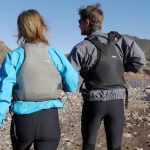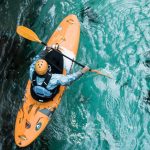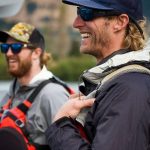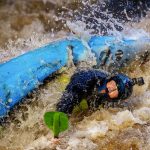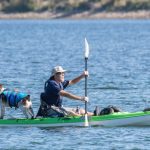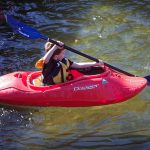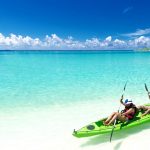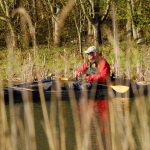Since 1972 the NRS name has stood for rugged, reliable equipment built to the highest standards. Below is the overview of their PFD model line for 2023.
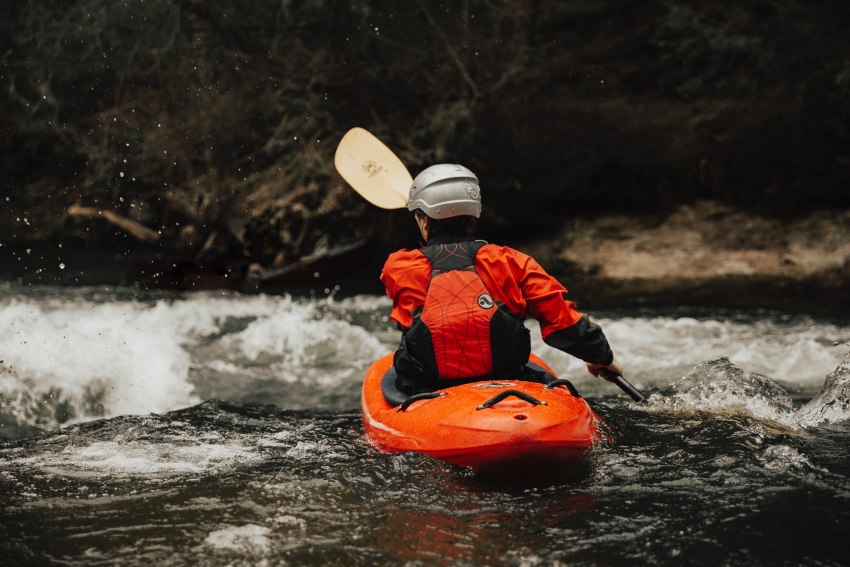
If there’s one guarantee when paddling white water, it’s that eventually, you’re going to fall in.
Trust me, swimming through waves and rapids isn’t a lot of fun if you aren’t high enough in the water to breathe properly.
When you end up in the water, you rely on your personal flotation to keep you afloat. But whitewater, or rescue PFDs need to do so much more than just float you.
In this article, we are going to look at different types of whitewater life vests and give you our rundown of the best whitewater PFDs.
As an affiliate of Amazon and other retailers, we may earn a small commission when you buy via our links, at no additional cost to you. Thank you!
At a Glance: Best Whitewater PFDs
- NRS Ninja – Best All-around Whitewater Life Jacket
- Stohlquist Edge
- Astral Layla – Best Female Specific Whitewater Life Jacket
- Astral Ringo
- Stohlquist Rocker
- NRS Big Water V Youth – Best Youth Life Jacket
- Stohlquist Canyon – Best Commercial PFD
- Astral Green Jacket – Best Rescue Vest
- Stohlquist Descent
Comparison Table: Best Whitewater PFDs
| Model | Specs | Where to Buy |
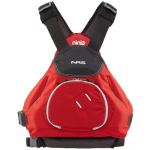 NRS Ninja | Buoyancy: 16.3 lbs. Weight: 2.15 lbs. USCG Rating: Type III | Amazon |
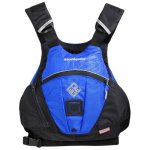 Stohlquist Edge | Buoyancy: 17.8 lbs. Weight: 1.11 lbs. USCG Rating: Type III | Amazon |
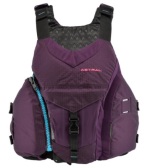 Astral Layla | Buoyancy: 16.3 lbs. Weight: 1.76 lbs. USCG Rating: Type III | Amazon |
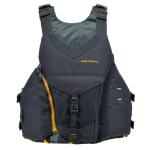 Astral Ringo | Buoyancy: 16.3 lbs. Weight: 2 lbs. USCG Rating: Type III | Amazon |
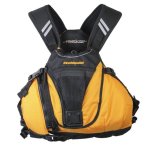 Stohlquist Rocker | Buoyancy: 16.8 lbs. Weight: 1.21 lbs. USCG Rating: Type III | Amazon |
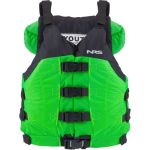 NRS Big Water V Youth | Buoyancy: 17 lbs. Weight: 2.2 lbs. USCG Rating: Type V | Amazon |
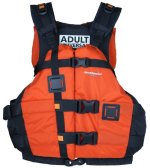 Stohlquist Canyon | Buoyancy: 26 lbs. Weight: 1.9 lbs. USCG Rating: Type V | Amazon |
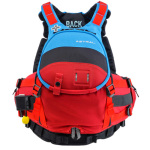 Astral Green Jacket | Buoyancy: 16 lbs. Weight: 2.9 lbs. USCG Rating: Type V | Amazon |
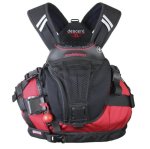 Stohlquist Descent | Buoyancy: 17 lbs. Weight: 3.1 lbs. USCG Rating: Type V | Amazon |
Our Top Picks
NRS Ninja – Best All-around Whitewater Life Jacket
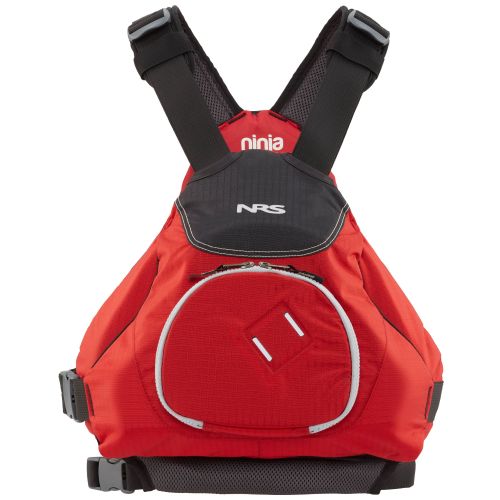
Buoyancy: 16.3 lbs. (7.39 kg)
Weight: 2.15 lbs. (0.98 kg)
USCG Rating: Type III
The NRS Ninja is a PFD designed for athletic freedom and uninhibited performance. This PFD is suitable for paddlers of any discipline, whether you’re a recreational kayaker, exploring open lakes or heading down raging rapids.
With all the floatation centred in one lower area, the Ninja frees up your upper body for maximum rotation and movement. This is especially useful for high pressure situations, like white water kayaking, where any constriction on your movement can stop you from timing that critical stroke.
Alternatively, this shorter profile makes the Ninja the perfect choice for adults with shorter torsos, or youths who have outgrown their junior PFDs.
RELATED: NRS PFDs 2023: the Ultimate Guide and Reviews
The side entry, six point adjustment design makes this really easy to fit to form, so you’ll be able to swim freely if you come out of your kayak.
On the front of the Ninja is an enormous clam-shell style pocket. This thing is massive. You can take everything you need, whether its rescue kit, cameras, phones or just enough chocolate to see you through the day, it will all fit.
Stohlquist Edge
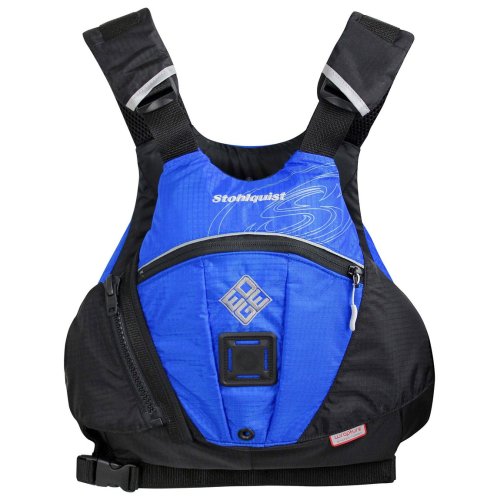
Buoyancy: 17.8 lbs. (8.07 kg)
Weight: 1.11 lbs. (0.50 kg)
USCG Rating: Type III
Stohlquist Edge is a low profile whitewater PFD which is perfect for beginners who want the freedom to paddle easily. The small footprint and graded sizing means you don’t have any more foam than you truly need. This allows the Edge to conform to your body and wrap closely to you, giving you a comfortable fit that doesn’t inhibit your paddling.
The roomy, top loading pocket gives you space for cameras, safety kit or snacks on the water, keeping them really accessible and secure. There’s a knife lash point on the front so you can keep your rescue knife close to hand, too.
The Edge is a no-frills, no nonsense PFD which has all the essentials and no additional, unnecessary features. It’s beginner friendly, or perfect for a recreational paddler who sometimes ventures into white water and wants a PFD that can cope with the strains of the environment.
Astral Layla – Best Female Specific Whitewater Life Jacket
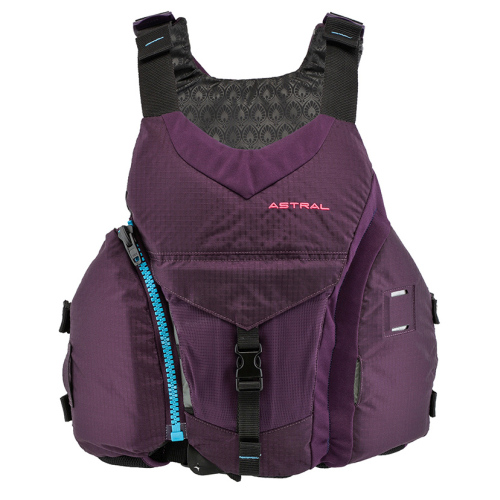
Buoyancy: 16.3 lbs. (7.39 kg)
Weight: 1.76 lbs. (0.79 kg)
USCG Rating: Type III
Based on a style introduced by the Astral founder back in the 90s and refined over the years, the Layla is arguably the world’s best fitting female specific PFD on the market.
The Layla is designed to articulate perfectly to fit any female figure. The hinged “princess cut” on the front and rear panels, as well as Astral’s self styled “boob cups” give the Layla a figure hugging feel which allows you to get on with paddling, rather than fiddling and fighting to make your PFD fit you properly.
The Layla is a multi-purpose PFD, equally at home on a recreational paddler, touring trip, SUP adventure, or on a white water river. For the latter, a quick release rescue belt can be fitted. The large pocket on the front is big enough to fit phones, cameras or anything else you might need close at hand on the water.
With the focus on comfort and style, the Layla is a PFD you’re actually going to want to wear on the water.
Astral Ringo
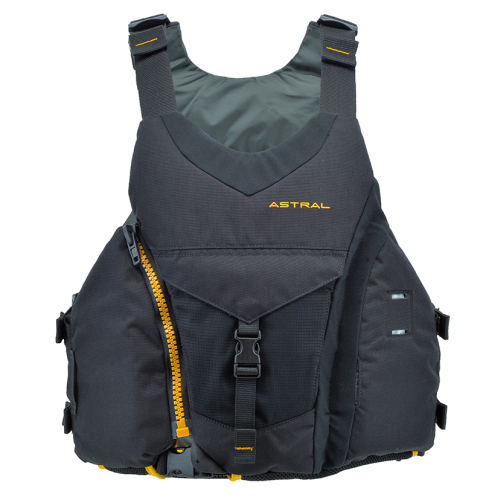
Buoyancy: 16.3 lbs. (7.39 kg)
Weight: 2 lbs. (0.91 kg)
USCG Rating: Type III
The Ringo is one of Astral’s many high quality do-it-all PFDs. Unlike some other brands, when Astral say they do-it-all, they do everything to a really, really high standard.
Because primarily this is a recreational or touring PFD, the focus is largely on comfort and movement. The front and rear panels of the Ringo are made from organic kapok, a soft and malleable material. Thanks to this, and the hinged joints on both panels, the jacket can contort itself to fit any body shape perfectly.
The Ringo is another slim fitting PFD, keeping itself out of the way so you can get on with paddling. With this in mind, the pocket on the front is a really low profile design. Despite this, it’s really easy to access and has enough space for phones, cameras, and anything else you want to take on the water, all without getting in your way.
For a lot of people, wear and tear on their favorite PFD is a real issue, and more often than not they’re replaced because of external or cosmetic damages, rather than functional issues. With 500 denier cordura material, you can be sure that the Ringo will endure even the toughest use.
For whitewater paddlers, a quick release harness can be added to turn this into a rescue vest.
Stohlquist Rocker
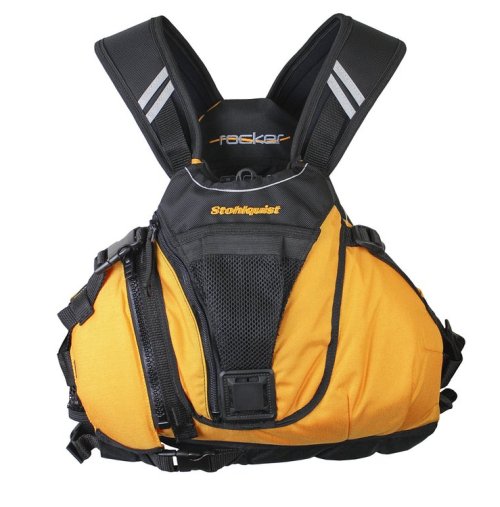
Buoyancy: 16.8 lbs. (7.62 kg)
Weight: 1.21 lbs. (0.55 kg)
USCG Rating: Type III
Stohlquist Rocker is the ideal low profile PFD for whitewater or SUP paddlers. This is one of Stohlquist’s most popular PFDs, loved for the simplicity of the design. By centering all of the bulk around the waist, you maximize upper body movement and freedom. This is a great choice of PFD for a freestyle river paddler who can’t afford to miss a stroke.
With cross-chest cinch straps, this floatation stays low even if you take a swim, keeping it well out of the way as you collect your gear and get to the side of the river. Free floating, reinforced shoulder straps not only aid movement, but also make carrying your kayak to the river far more comfortable, so you can get on with paddling.
The Rocker has a selection of low profile, spacious pockets, so your safety kit is always at hand without getting in the way. There’s even a hands free beverage pocket, so you can stow your beer when you’re having a post paddle drink.
NRS Big Water V Youth – Best Youth Whitewater Life Jacket
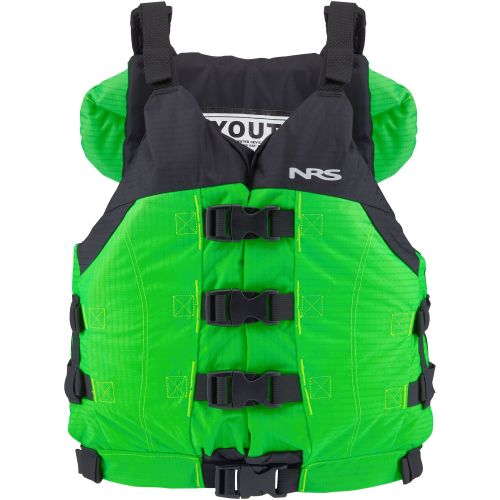
Buoyancy: 17 lbs. (7.7 kg)
Weight: 2.2 lbs. (0.99 kg)
USCG Rating: Type V
If you’re going to take youngsters onto high volume rivers, you want to know they’ve got all the floatation you can comfortably fit on them. The NRS Big Water V Youth is the lower profile and smaller version of the enormously popular and industry leading Big Water V.
With four chunky buckles and eight adjustment points, the Big Water V Youth is easy to fit and adjust to fit. Additional leg straps can be fitted for added security. This is especially useful for smaller youths, or those who lack defined figures, where the PFD can occasionally slide around.
The youth model retains the floatation collar, arguably even more use on a youth PFD, where the extra foam keeping them clear of the water can prevent undue panic in the river.
Stohlquist Canyon – Best Commercial PFD
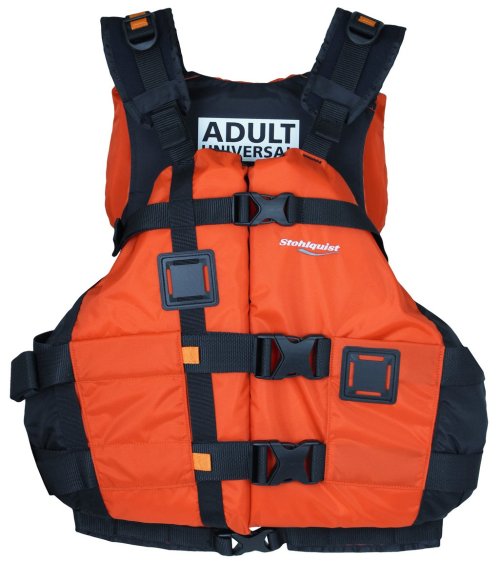
Buoyancy: 26 lbs. (11.8 kg)
Weight: 1.9 lbs. (0.86 kg)
USCG Rating: Type V
Stohlquist Canyon is a commercial grade PFD, designed for whitewater rafting and kayaking in the most demanding environments. This is pure floatation. The Canyon is a no-frills, easy to use, secure vest which will keep you or your customers safe in big rivers and raging torrents.
Front buckles and highly adjustable straps make it really easy for novice paddlers to fit their PFD and tighten it as appropriate. The full panel design on the front and rear gives a sense of comfort and support which can be reassuring to beginner paddlers.
Extra floatation behind the head should help to keep your head clear of the water as you wash through waves, making it a far more comfortable swim.
These PFDs are fitted with lash points, for rescue knives or strobe lights, for example. They are also compatible with extras, like rescue harnesses and crotch straps, where necessary.
The Canyon offers a huge amount of floatation for people who need it, so your clients will still be smiling once they get themselves out of the river, ready to tackle the next rapids.
Astral Green Jacket – Best Rescue Vest
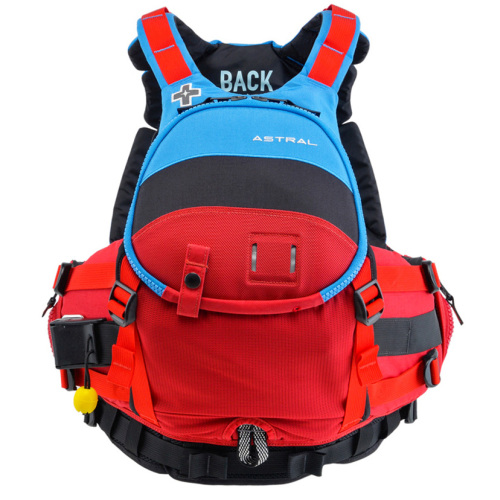
Buoyancy: 16 lbs. (7.25 kg)
Weight: 2.9 lbs. (1.32 kg)
USCG Rating: Type V
Is the Green Jacket the best whitewater kayaking PFD on the market? There are whole rivers of paddlers who would agree that it is. With how secure, comfortable and bombproof it feels, it’s hard to argue with them.
For a PFD which feels so secure, it is amazing just how much freedom you get from paddling in it. The open design at the top half keeps the bulk of the Green Jacket low, and thanks to the foam Techtonics, the top half floats and moves independently, giving you maximum movement.
The enormous clamshell style pocket on the front gives you more than enough space for everything you need, and the internal storage makes it easy to find anything, even in a hurry. Behind this pocket there is ample space for a throw rope or sling, so you’re always ready to deploy. On the side, there are two small pockets for web tow storage.
The quick release harness and many well thought out tags, toggles and tabs makes this the primary rescue vest for river guides and top expedition paddlers alike. This is a PFD which is tried and tested in the most rigorous environments, and it always seems to come out on top.
Stohlquist Descent
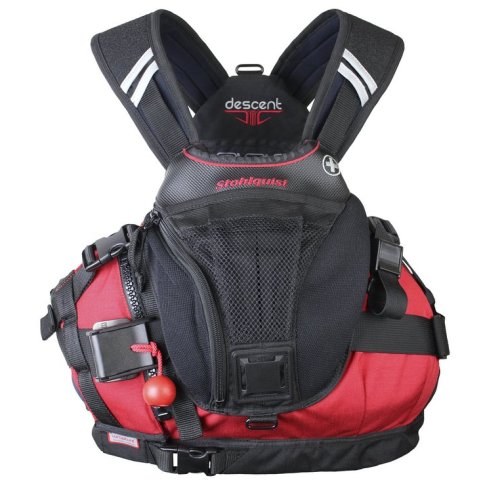
Buoyancy: 17 lbs. (7.7 kg)
Weight: 3.1 lbs. (1.40 kg)
USCG Rating: Type V
The Descent is Stohlquist’s ultimate rescue vest, designed for the steepest creeks and tightest situations. Most of the buoyancy, and bulk, are centred around your midriff, keeping you well protected and giving you loads of floatation, while also keeping your arms free to paddle.
The cut of the panels, which taper away towards the top, are designed to maximize your paddling movement and body rotation, so you can get those keystrokes in the perfect place.
A large front pocket is easy to access through and keeps all of your rescue equipment close at hand, so you always know where your sling is when you really need it. A knife lash point on the front keeps your rescue knife out of the way, but really accessible.
One of the worst things about white water paddling can be the portages into the river, or on tight creeks picking your way around an unrunnable rapid. The shoulder straps on the Descent are padded, armoured and textured, so your boat won’t be slipping around or digging in as you carry it on your shoulder.
This is Stohlquist’s only rescue PFD which has a harness fitted.
What Type of PFD Do You Need for White Water?
Different Types of PFDs
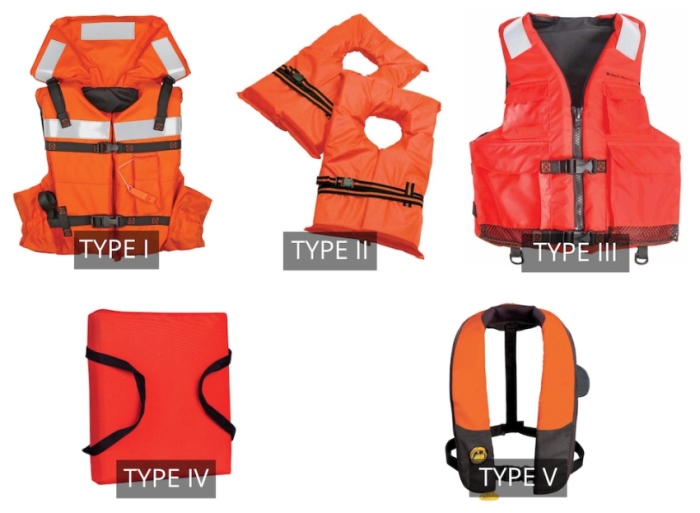
Personal flotation devices include every type of life jacket or buoyancy aid on the market. The US Coast Guard classifies these PFDs into five types.
- Type I – Have the most inherent buoyancy and are designed for rough conditions or offshore. These PFDs are designed to turn unconscious casualties into a safe position.
- Type II – Designed for calmer waters or nearer shore and have the ability to turn some casualties onto their back.
- Type III – Most kayaking PFD fall into this category. These PFDs are suitable for protected waters but not for prolonged survival in open water. Not designed to turn casualties over but only to provide flotation.
- Type IV – Thrown devices to aid a struggling person to either assist rescue or keep them afloat while they await rescue.
- Type V – Sport-specific or condition-specific PFD. Each of these devices has its own specific use.
Which PFD Type is Right for Whitewater Kayaking?
Most kayaking PFDs are classified as Type III. These vests are designed purely for flotation and rely on the user being active in the water. Unlike Type I or II life jackets, Type III vests are non-restrictive and allow you to swim uninhibited.
Whitewater rescue vests are classified as type V. These have specific rescue features that we will explain below.
How Much Flotation Do I Need?
USCG-rated life jackets have between 15.5 and 22 lbs. of flotation. Most whitewater PFDs are somewhere around the 15.5 – 17 lbs. region.
How much flotation you require will depend on your size and weight, as well as your environment. If you are kayaking on fairly subdued, lower volume or grade white water, you may not require the same level of buoyancy as someone paddling high-grade, high-volume rivers.
Lower buoyancy vests tend to be less intrusive and lower profile, as we will look at shortly. However, you should remember that the most important feature of a PFD is to keep you floating with your head above water. No matter how much movement you have, it’s not worth compromising your safety.
Features of a Quality Whitewater Life Jacket
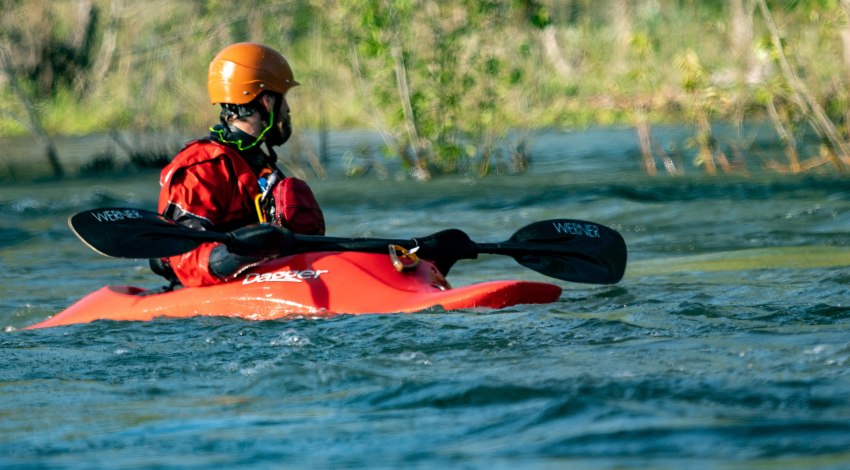
Freedom of Movement
Whitewater kayaking at all levels depends on your ability to place your stroke in the right place at the right time. A PFD that inhibits your movement makes it far more difficult for you to progress in the sport or get comfortable in your kayak.
Most whitewater kayaks are sit-in, closed-cockpit style. Longer PFDs, or those that sit too high on the wearer, are uncomfortable in this style of kayak. Most whitewater PFDs, then, focus the buoyancy around your midriff and maximize shoulder mobility.
Comfort and Cut
The cut, as we mentioned before, focuses on movement in your kayak. However, different styles of PFD have different cuts. Disciplines like playboating, where features are minimized and freedom is prioritized, have a very open cut. River vests tend to cover more of the body, offering an element of protection as well as more space for pockets and other features.
Female-cut PFDs are available from most manufacturers, too. These are designed to fit the female form more comfortably, with malleable panels and extra space in all the right areas. There are also PFDs made specifically for kids.
Different styles of PFD will suit different body shapes and needs. Remember, when trying on your PFD, try it over your paddling clothes.
Storage
Unless they are designed for a very specific purpose, like canoe slalom vests, every whitewater PFD will have some kind of storage. The basic pocket is usually paired with a knife leash for quick access to your safety equipment.
Whether this storage takes the form of a single pocket, multiple pockets, or a pocket divided into areas will depend on the particular model. We won’t delve into too much detail here, because everyone has their own preferences for how they store their gear. We recommend that you pick a life jacket with enough storage for the basics at least.
What is the Difference Between a Rescue PFD and a Whitewater PFD?
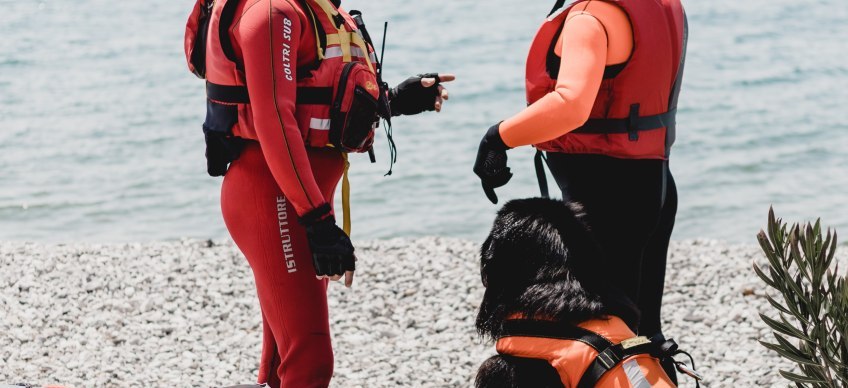
Rescue PFDs are largely similar to whitewater PFDs. However, USCG usually classifies rescue life vests as Type V PFDs while most whitewater PFDs fall under Type III. So what are the differences between those?
Durability
Rescue PFDs are made from far heavier duty materials like Cordura. This gives them a rugged outer which can withstand even the most rigorous use. If you’re in a situation where you need to be wearing a rescue vest, you will be grateful for the durability.
Storage
If you’re deep into a gorge on a multi-day trip, you need your rescue equipment close at hand. A rescue PFD is likely to have more storage than a standard whitewater PFD. This storage is usually divided up so you can access each individual piece of gear quickly and easily.
Rescue Harness
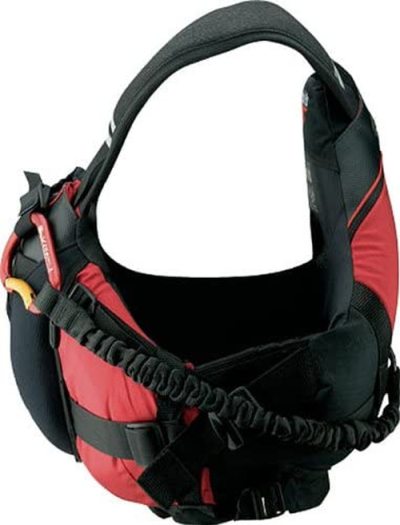
The main difference between a Type III and Type V PFD is the addition of a rescue harness. The rescue harness is a nylon webbing strap, which secures around the middle of the vest. These straps are held in place with a quick-release buckle.
Who Needs a Rescue PFD?
Using a Type V rescue PFD requires certain amounts of knowledge and training. A swift water rescue course will teach you the basics of how to properly use your PFD. Using these technical pieces of equipment without prior training can put you in dangerous situations.

